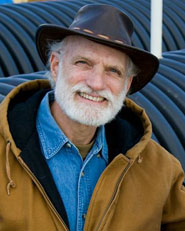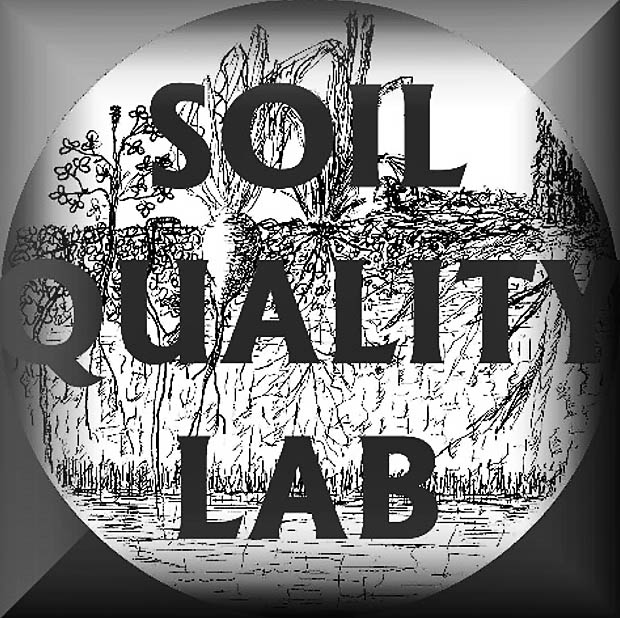 The Soil Quality lab under the leadership of Professor Ray Weil studies physical, chemical and biological aspects of Soil Quality and Health as related to Management of Soil Organic Carbon, Nutrient Cycling and Water Quality, and Sustainable Farming Systems.
The Soil Quality lab under the leadership of Professor Ray Weil studies physical, chemical and biological aspects of Soil Quality and Health as related to Management of Soil Organic Carbon, Nutrient Cycling and Water Quality, and Sustainable Farming Systems.
The lab probes fundamental relationships among soil organic matter fractions and soil ecological functions and is contributing to our understanding of the active fraction of soil organic matter. The lab is known for developing a practical test for easily oxidized, microbially-active partially processed carbon as part of soil organic matter. Our lab’s permanganate oxidizable carbon test (termed POXC in the scientific literature) is now used by researchers worldwide as a leading indication of soil health and carbon dynamics in a wide range of soils.
More about the Soil Quality Lab
The lab has also developed field-ready on-the-spot analyses for a number of important soil quality parameters. These were incorporated into a system of soil analysis called SoilDoc in collaboration with the AgCenter at Columbia University’s Earth Institute where Ray was a senior adjunct research scientist. The SoilDoc system is now housed with the University of Florida. This system has been deployed in many tropical countries that lack a well-developed soil testing lab infrastructure.
The lab’s nutrient cycling work is focused efficient use of nutrients (especially N, P and S) in various agroecosystems, including intensively grazed pastures, tropical smallholder farms, and high yield conservation grain production systems. Our work on sulfur fertility has shown that optimizing the supply of this often-neglected essential nutrient can dramatically improve the nutritional quality of legume proteins as well as the crop yields. Our work on nitrogen has revealed large pools of mineral N that remain deep in the soil after summer crop growth. Our stable isotope tracer work has shown that this nitrogen can be captured by deep rooted cover crops if established early enough in the fall.
Additionally, the lab is investigating multiple soil, economic and environmental benefits derived from innovative cover crop systems. This work introduced the oil-seed- or forage-type radish as a cover crop to North American farmers, including the “Tillage Radish” brand developed by Steve Groff, a collaborating farmer-entrepreneur in Pennsylvania. The lab’s cover crop work has had a wide impact, demonstrating, among other benefits, the compaction-alleviation capacity of the radish and other brassica cover crop roots. Our recent work has demonstrated the importance of establishing mixed-species cover crop early in the late summer or fall, generally even before harvest of summer cash crops. Similarly, the lab is researching how to achieve the benefits of allowing cover crops to grow longer in spring, sometimes even beyond the planting of summer cash crops (a practice known as “planting green”).
The Soil Quality lab is fully equipped for a wide range of soil and plant analyses, as well as field studies such as those requiring deep soil cores, continuous soil monitoring, or root images via mini-rhizotron. The lab is doing research on the use of portable X-ray fluorescence to analyze plant tissue for nutrient element content.
People in Our Research Group
Post-Doctoral Researchers:
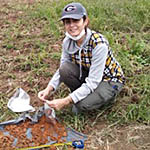 Maryam Foroughi
Maryam Foroughi
Maryam is a post-Doctoral researcher studying mainly forest soils. She is leading a project aimed at assessing legacy lead and other heavy metal contamination in forest soils near major highways. She completed her PhD in forest soils at the University of Georgia where she worked in the renowned Calhoun Forest Long Term Ecosystem Study site in South Carolina.
Graduate Student Researchers:
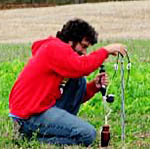 Nathan Sedghi
Nathan Sedghi
Nathan is a Ph.D. student and lead graduate student on a collaboration with Mid-Shore River Keepers to research ways to keep rivers clean and farmers in the watersheds profitable at the same time. He came to us after earning a MS degree at Old Dominion University in Norfolk, Virginia working on wetland hydrology. Nathan thinks that “soil is one of the most important factors connecting a community. As such, it plays an integral role in biogeochemical cycling, nutrient storage, and greenhouse gas sequestration; all of which are fundamental research interests of mine. As humans, agriculture is our most important use of soil as a natural resource. In an agricultural setting, all of my research interests in soil are tied together, and research to improve agriculture in a sustainable way improves peoples' lives.” His dissertation project involves extending the growing time of a winter cover crop mixture and observing the effect this has on nutrient cycling; it's expected that this research will allow farmers to save on fertilizer costs while also reducing nitrogen pollution lost to the watershed. By working on this project, he hopes to contribute to the body of knowledge encouraging farmers to participate in sustainable practices, thus helping to protect our valuable natural resources.
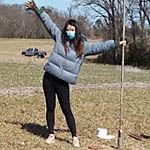 Qianyao Si
Qianyao Si
Qianyao is a Ph.D. student in environmental soil science. She helped initiate research in a collaborative project with Penn State University, Cornell University and Virginia Tech. The project aims to research ways to help agriculture in urbanizing areas thrive many years into the future.
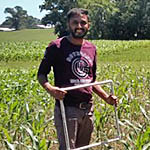 Biwek Gairhe
Biwek Gairhe
Biwek is a Ph.D. student and lead graduate student on a project to evaluate strategies for transitioning to organic grain production. A native of a small farming village in Nepal, Biwek brings many years of diverse experience in agriculture to his current research. Biwek wants to learn about conservation agriculture as practiced in Maryland so that he can adapt the principles to improve farming in his home country. He is especially interested in biological aspects of soil health.
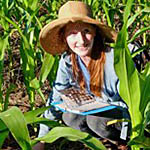 Melissa Stefan
Melissa Stefan
Melissa is a graduate student working on her MS degree and is a lead researcher for the Weil lab contribution to a regional project on Thriving Agriculture in Urbanizing Environments. She is studying nutrient cycling, and the management of cover crops to minimize runoff and leaching losses of N and P while enhancing productivity and profitability in commodity no-till production systems.
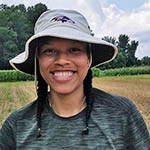 Vivian Owens
Vivian Owens
Vivian is a graduate student working on her MS degree and is a lead researcher for the Weil lab contribution to a regional project on Thriving Agriculture in Urbanizing Landscapes. She is studying nutrient cycling, and the management of cover crops to minimize runoff and leaching losses of N and P while enhancing productivity and profitability in commodity no-till production systems. A native of Baltimore, she will also be doing some case studies of nutrient flows and community interactions among small farms along a gradient from central-city to semi-rural suburbs. On top of all that, she serves an emergency medical technician (EMT) at the College Park fire station.
Undergraduate Research Assistants:
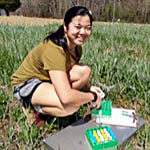 Mia Godbey
Mia Godbey
Mia is an undergraduate Environmental Science and Technology major with a focus in the Natural Resources Management concentration and a minor in Sustainability. She feels she has learned many skills in her time working in the Weil lab. She is now expert at collecting and preserving soil leaching water samples from field suction lysimeters, as well as collecting greenhouse gas samples from field sampling chambers. She also helps in collecting soil samples, and in organizing data and spreadsheets online. Her early involvement at Anita C. Leight Estuary Center as both a camper, and later, a camp counselor, sparked her passion in pursing an environmental science degree. “I basically spent my childhood outside, either exploring the creek that winds through my neighborhood, or searching for snakes, turtles, and frogs at camp. Spending many summers in one of the few remaining freshwater tidal marshes in the upper Chesapeake Bay has revealed the importance of reducing nutrient and chemical flow into the watershed. This research is vital as a way to educate farmers the benefits on longer cover crop growing times so that they can reduce their use of fertilizers.” Mia has taken on more responsibility such as running sophisticated analytical instrumentation. She hopes that this research will lead to more sustainable agricultural practices in our effort to protect our Earth.
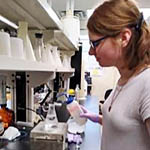 Maggie Psurek
Maggie Psurek
Maggie is an undergraduate research assistant majoring in Chemistry and hoping to minor in Sustainability and/or Soil Science. She first discovered her interest in sustainability on a trip with the Chesapeake Bay Foundation in 6th grade. Since then, she continued to develop her passion for environmental research by interning at the National Institute of Standards and Technology, as well as writing about the Chesapeake Bay for her high school senior paper. In the Soil Quality Lab she has worked on project that aims to enhance legume protein by managing sulfur fertility and a project on strategies for the transition to organic grain farming. She prepares soil extractions for test for available sulfur and has been trained and certified to use x-ray fluorescence to analyze elements in plant tissue. Additionally, she helps collect soil and plant samples in the field. Maggie is enthusiastic about learning and working on research that addresses real-world issues.
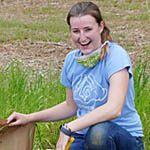 Maeve Kessler
Maeve Kessler
Maeve is an undergraduate research assistant majoring in Environmental Science and Policy major with a concentration in Environmental Geosciences and Restoration at the University of Maryland. Originally from Yardley PA, Maeve Kessler is also pre-law and interested in environmental law work. On campus, she works as a student ambassador for the college of Agriculture and National Resources recruiting and supporting new incoming students. In addition, on campus Maeve is also the vice president of the geology club and an undergraduate student researcher at the Soil Quality Lab under Dr. Ray Weil. She enjoys all the diverse experience she gains from working for Dr. Weil’s lab from field work installing equipment and collecting samples to preparing and processing those samples in the lab.
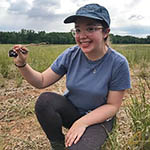 Sophia Moyer
Sophia Moyer
Sophia is an undergraduate research assistant who began working at the Weil Soil lab in the Spring of 2021. She grew up in Columbia, Maryland. Through her early life, Sophia spent her time participating in outdoor recreation and serving her community. This sparked her interest in the environment and studying how people interact with it. Going into her senior year, Sophia is completing her undergraduate degree in Environmental Science and Policy with a concentration in the Environment and Agriculture. She is interested in sustainable food systems, agroecology, and environmental education. She has assisted in projects that evaluate cover cropping's effect on soil water, nutrient runoff, and slug populations.
 Brett Sproul
Brett Sproul
Brett is an undergraduate research assistant majoring in Environmental Science and Policy with a concentration in Environmental Economics. He says he has always had a strong affinity for nature, but it wasn't until he interned at the USDA that he really enjoyed conducting environmental research and specifically research into sustainable agriculture. “Being part of Dr. Weil's lab has helped me gain me an immense amount of knowledge in the field of agriculture and soil science.” Brett’s work includes collecting soil core samples, analyzing lysimeter samples, and conducting nutrient analysis. Because he is also an economics student, he hopes to continue to study and work on improving the economic viability of sustainable agriculture practices such as cover cropping, and organic transitions of agriculture.
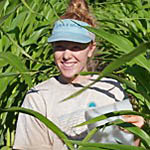 Sydney Gibitzer
Sydney Gibitzer
Sydney is an undergraduate research assistant majoring in the Soil and Watershed concentration in the Environmental Science and Technology department. She is passionate about soils and the environment. In the Weil lab she has worked on groundwater, slug damage, soil sensors and a lot more.
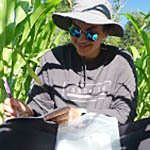 Iris Yourick
Iris Yourick
Iris is an undergraduate research assistant majoring in Chemistry with minors in music and sustainability. She likes reading outside, watching documentaries, playing the bass, and water coloring. She is interested in learning about nutrient cycles and everyday chemicals in nature. In the Weil lab she is working on water quality and cover crop research.
Lab Alumni:
Post-Doctoral Alumni: |
||
|
|
|
Graduate Alumni: |
||
|
|
|
Undergraduate Alumni: |
||
|
|
|
Research
Areas of Research Focus:
- Soil Science
- Soil Health
- Nutrient Cycling
- Sustainable Agriculture
- Systems Water Quality
Current & Ongoing Research:
Sulfur Management to Enhance Protein Quality and Yield of Grain Legumes
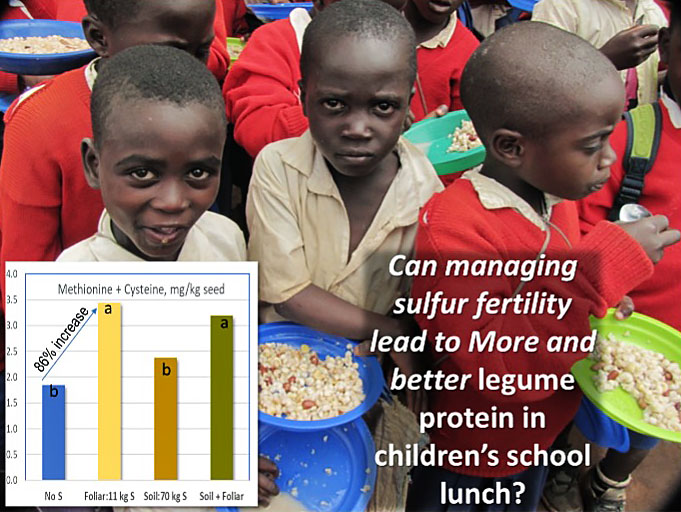 Legume seeds (e.g. soybean, common bean, peanut, lentil and pea) are the main source of dietary protein for billions of people around the world. Soybeans are also vital for the production of non-ruminant livestock (poultry and pork) that in turn provide a second major source of human dietary protein. The utilization of legume protein by people (and non-ruminant livestock) is often limited by the proportion of methionine and cysteine, two essential sulfur-containing amino acids in that protein. Plant breeders have had little success in improving the level of methionine and cysteine in legume seed proteins. We found no literature on research to increase these amino acids through field-scale agronomic management of sulfur fertility. Enhancing the content of these two amino acids in legume crops could lead to enhanced child health and growth in low-income countries (and vegetarian populations). It could also lead to more efficient production of poultry and pork. Sulfur deficiency in crops is common in many parts of the world, especially in Africa, and is increasingly common in North America since the successful implementation of sulfur dioxide air pollution control during the past three decades.
Legume seeds (e.g. soybean, common bean, peanut, lentil and pea) are the main source of dietary protein for billions of people around the world. Soybeans are also vital for the production of non-ruminant livestock (poultry and pork) that in turn provide a second major source of human dietary protein. The utilization of legume protein by people (and non-ruminant livestock) is often limited by the proportion of methionine and cysteine, two essential sulfur-containing amino acids in that protein. Plant breeders have had little success in improving the level of methionine and cysteine in legume seed proteins. We found no literature on research to increase these amino acids through field-scale agronomic management of sulfur fertility. Enhancing the content of these two amino acids in legume crops could lead to enhanced child health and growth in low-income countries (and vegetarian populations). It could also lead to more efficient production of poultry and pork. Sulfur deficiency in crops is common in many parts of the world, especially in Africa, and is increasingly common in North America since the successful implementation of sulfur dioxide air pollution control during the past three decades.
We conducted a survey of commercial soybeans grown in Maryland and found a nearly two-fold range in methionine+cysteine contents of the seed and a strong correlation between the contents of those amino acids and S in the seeds. We then conducted S fertilization experiments with several varieties of soybeans grown on two sandy coastal plain soils using four fertility treatments: control (no sulfur added), gypsum applied prior to planting as a powder on the soil surface (29.1 kg S/ha), Epsom salt applied as a foliar spray during early flowering (13.5 kg S/ha), and the combination of gypsum + Epsom (42.6 kg S/ha). Averaged across four experiments, the yield was significantly increased by all three S treatments, with the control yielding 2,662 kg/ha, gypsum 3,152 kg/ha, Epsom 3,131 kg/ha, and gypsum+Epsom 3,368 kg/ha. The % methionine + cysteine in the seed dry was significantly increased as well by the S treatments: control 0.29%, gypsum 0.37%, Epsom 0.50%, and gypsum+Epsom 0.43%. The total amount of methionine + cysteine produced per ha of and was nearly doubled by applying just 13 kg S as a foliar spray. This project has shown that S fertilization can substantially increase the nutritional quality of soybean protein as well as the yield. These results are especially relevant to organic soybean producers as synthetic supplementation with methionine in poultry and pig feed is not allowed in organic farming.
We aim to expand our research on sulfur to other parts of the world (especially Africa) and other grain legumes (such as dry beans, lentils, etc.) commonly consumed directly in human diets. Considering sulfur in crop nutrient management could improve grain legume yields, farmer profitability, and the nutritional quality of human and animal diets.
Multi-Purpose Cover Crops to Enhance Environmental Quality and Farm Profitability

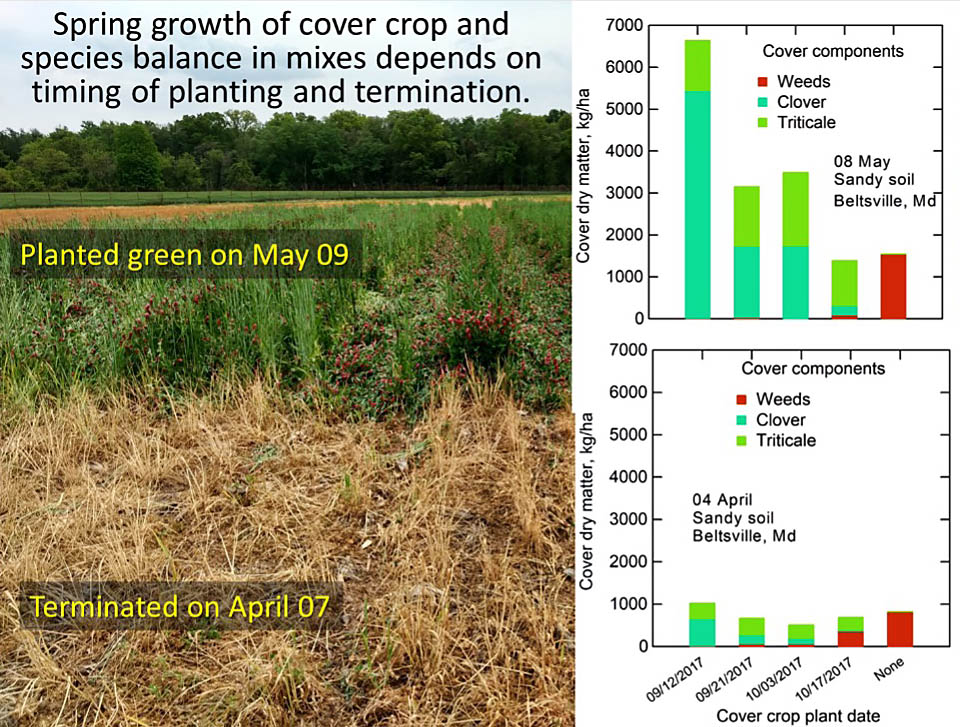 Cover crops are plants grown to increase the quality and productivity of the soil as well as increase the amount of carbon sequestered from the atmosphere. We are developing new cover crops, such as the Forage Radish, that can provide a wide range of benefits including the alleviation of soil compaction by root bio-drilling, the capture of excess nitrogen to prevent water pollution and its subsequence release to reduce fertilizer requirements, the suppression of weeds to reduce the need for tillage and herbicides, and the regulation of the soil microbial system to enhance synergies and inhibit pathogens.
Cover crops are plants grown to increase the quality and productivity of the soil as well as increase the amount of carbon sequestered from the atmosphere. We are developing new cover crops, such as the Forage Radish, that can provide a wide range of benefits including the alleviation of soil compaction by root bio-drilling, the capture of excess nitrogen to prevent water pollution and its subsequence release to reduce fertilizer requirements, the suppression of weeds to reduce the need for tillage and herbicides, and the regulation of the soil microbial system to enhance synergies and inhibit pathogens.
Due partially to its generous cost-share program, Maryland the highest proportion in the US of cropland acres cover cropped. However, farmers typically plant cover crops after cash crop harvest, which our research shows is usually too late to effectively prevent nitrogen leaching during the winter or provide enough cover to adequately control overwinter erosion. Our research shows that aerial or ground based interseeding into standing crops, choosing earlier-maturing corn and soybean cultivars, and making other adjustments to the farming system may allow earlier cover crop establishment.
Many farmers also cut short cover crop growth potential in spring by terminating cover crops as early as possible, commonly in late March or early April. Such termination is too early to allow the cover crops to optimally promote soil health, water conservation and crop yield. Delaying spring cover crop termination until optimal cash crop planting time, especially planting green instead of killing cover crops two to four weeks ahead of planting, could allow both timely cash crop planting and extended cover crop growth. Potential benefits of greater cover crop biomass growth include short-term benefits such as greater nutrient cycling, better weed-suppression, and more effective water-conserving in summer, in addition to longer-term benefits of increased soil organic matter and biological activity.
Soil Health and Nutrient Flows with Enhanced Cover Cropping and Soil Management.
 To study long-term effects of enhanced cover-cropping, two replicated experiments using adaptive management are established on sandy soil and silty soils. Main plots are a corn-soybean cropping system with each crop represented each year. These are split into three subplots featuring enhanced cover cropping using radish-clover-rye mixture, or pure rye, or no cover crop. Enhanced cover cropping involves interseeding to establish cover crops earlier so that substantial growth in fall will capture nutrients and protect soil over winter. In Spring, enhanced cover cropping includes growing cover crops up to or even beyond cash crop planting. These subplots are further divided into three sub-subplots which are used for early, mid and late cover crop termination when planting soybean and 0, 75 and 150 kg/ha levels of nitrogen fertilization when planting corn. A third site is established with only four treatment plots that are much larger (35 x 100m) in size and run down-slope on sandy soil into a forested wetland. This is also a corn-soybean system with either enhanced cover cropping or standard cover cropping. Transects of groundwater wells are installed running from the center of the field, at the edge of the field and in the forest downhill from the field. The wells in the field are protected by cast-iron manholes buried below the soil surface so that they can remain in the field for continuous long-term sampling despite agricultural machinery operations. Also installed under the manholes are suction lysimeters, and soil water and temperature sensors. The parameters being measured in this complex experiment include cover crop performance, crop yields, runoff water amount and nutrient content, percolation water nutrients sampled with suction lysimeters, groundwater level and nutrient content, and ecological observations on pests, nutrients, plant condition and soil health.
To study long-term effects of enhanced cover-cropping, two replicated experiments using adaptive management are established on sandy soil and silty soils. Main plots are a corn-soybean cropping system with each crop represented each year. These are split into three subplots featuring enhanced cover cropping using radish-clover-rye mixture, or pure rye, or no cover crop. Enhanced cover cropping involves interseeding to establish cover crops earlier so that substantial growth in fall will capture nutrients and protect soil over winter. In Spring, enhanced cover cropping includes growing cover crops up to or even beyond cash crop planting. These subplots are further divided into three sub-subplots which are used for early, mid and late cover crop termination when planting soybean and 0, 75 and 150 kg/ha levels of nitrogen fertilization when planting corn. A third site is established with only four treatment plots that are much larger (35 x 100m) in size and run down-slope on sandy soil into a forested wetland. This is also a corn-soybean system with either enhanced cover cropping or standard cover cropping. Transects of groundwater wells are installed running from the center of the field, at the edge of the field and in the forest downhill from the field. The wells in the field are protected by cast-iron manholes buried below the soil surface so that they can remain in the field for continuous long-term sampling despite agricultural machinery operations. Also installed under the manholes are suction lysimeters, and soil water and temperature sensors. The parameters being measured in this complex experiment include cover crop performance, crop yields, runoff water amount and nutrient content, percolation water nutrients sampled with suction lysimeters, groundwater level and nutrient content, and ecological observations on pests, nutrients, plant condition and soil health.
Strategies for Transitioning to Organic Grain Production
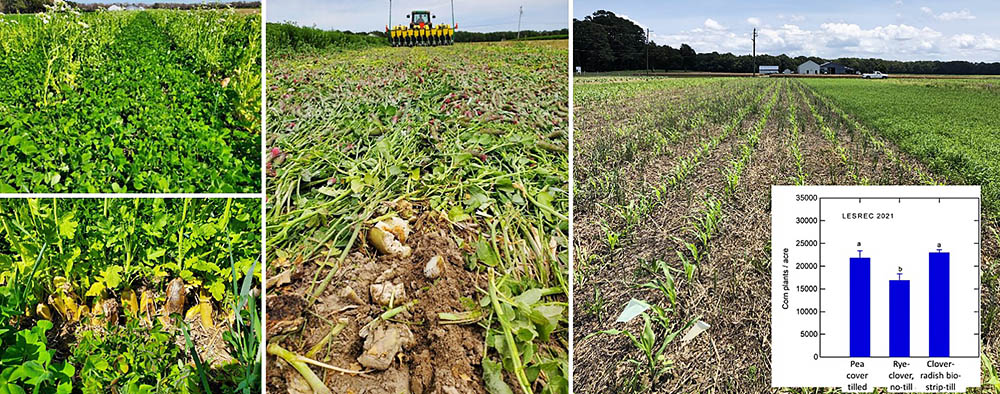
Organic production, per se, may not reduce environmental impacts such as sediment and nutrient loss and greenhouse gas emissions. However, organic grain production, if done regeneratively, may minimize these environmental impacts and provide substantial ecosystem services. Among these, nutrient loss reduction is vitally important given that about 40% of nutrient pollution to the Chesapeake Bay comes from agriculture. Other ecosystem services from regenerative organic farming may include carbon sequestration, soil erosion control, protection of above and below-ground biodiversity, and provision of clean water to aquifers and streams. This project studies a suite of practices that make organic farming more regenerative than typically practiced. Therefore, the adoption of organic farming presents a rare opportunity for grain farmers, especially those on the Delmarva Peninsula, to realize increased income as well as potentially provide better stewardship of their land and water.
This project's overall aim is to develop strategies and practices to minimize soil disturbance, environmental impacts, and input costs while providing profits during the transition comparable to those realized under conventional grain farming. This is an integrated research-extension project to mentor transitioning farmers and develop systems to minimize soil disturbance, environmental impacts, and input costs while providing profitability during the transition period. The research goal is to compare four transition strategies along a continuum of soil disturbance, soil cover, and input cost. These are being replicated in farm equipment scale plots on contrasting soil at two research stations and on two commercial farms. They are evaluated for effects on soil health, leaching and runoff nutrient loss, crop yields, profitability, and ease of management. In order of least to most disturbance, the four systems are 1) Perennial alfalfa-grass hay, untilled; 2) Minimum-till corn-soybean-wheat rotation with precision-zoned high-biomass diverse cover crops; 3) Reduced-till corn-soybean-wheat with high-biomass cover crops; and 4) Traditional full-tillage organic soybean-corn, with simple cover crops and input substitution (using organic-approved forms of the same types of inputs used by conventional farms). The project assesses the impacts of these transition strategies on soil health, farm profitability, and crop productivity. It includes an outreach component in collaboration with a grassroots farmer organization that involves farmers in the research and employs experienced organic grain farmers in mentoring farmers who are interested in learning how to transition to organic production.
Soil Quality Management for Sustainable Agriculture
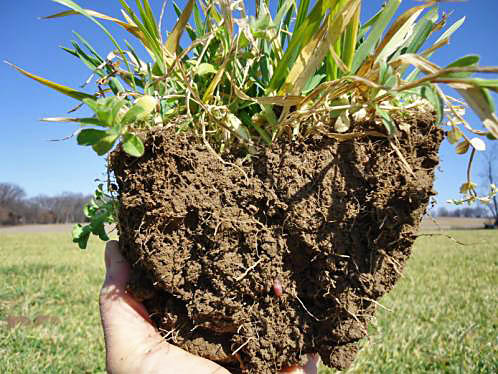 Soil quality is a concept that integrates soil physical, biological and chemical properties in a way that describes the capacity of the soil to provide such ecosystem functions as plant productivity, water purification and carbon sequestration. Optimizing the amount and quality of soil organic matter is often critical for improved soil function. We are researching sustainable farming systems that manage soil organic matter and enhance profitability, environmental quality, and food production. We are also developing robust methods that can be used in the field to assess the impact of agricultural practices on soil quality.
Soil quality is a concept that integrates soil physical, biological and chemical properties in a way that describes the capacity of the soil to provide such ecosystem functions as plant productivity, water purification and carbon sequestration. Optimizing the amount and quality of soil organic matter is often critical for improved soil function. We are researching sustainable farming systems that manage soil organic matter and enhance profitability, environmental quality, and food production. We are also developing robust methods that can be used in the field to assess the impact of agricultural practices on soil quality.
Organic Matter Test to Help Farmers Profitably Improve Soil Quality
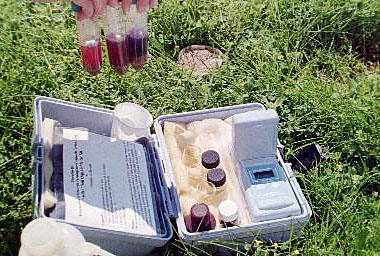 Research Area(s): Biology and Ecology of Soils, Soil Chemistry and Biochemistry, Soil Microbiology, Soil Quality.
Research Area(s): Biology and Ecology of Soils, Soil Chemistry and Biochemistry, Soil Microbiology, Soil Quality.
Soil Quality (SQ) is rapidly joining air and water quality as a major goal of natural resource management. A practical measure of SQ should emphasize soil properties that are affected by agronomic practices. Most of the functions associated with soil quality are strongly influenced by soil organic matter, especially the small portion (usually < 10% of total C) that is partially processed and stabilized by microbes but still considered active organic C. This research integrates key chemical, physical and biological soil measurements, as well as experience-based judgements by farmers, into SQ assessments that are sensitive to management. One of the early contributions from this work was the dilute potassium permanganate reactive carbon test, for which we developed both lab and field protocols. This test, sometimes termed “Weil Carbon” is now widely used and usually known as POXC - permanganate oxidizable carbon. In hundreds of published studies around the world, this test has usually proved to be one of the most sensitive to changes in soil management and most meaningful for diagnosing soil health.
Enhancing Human, Animal and Environmental Health in Degraded Landscapes Ethiopia’s Central Highlands
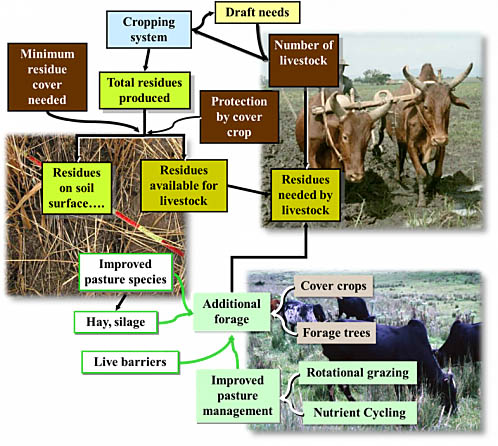 A collaboration with the Tully Lab at UMD and Debre Birhan University
A collaboration with the Tully Lab at UMD and Debre Birhan University
This transdisciplinary project aims to enhance ecosystem health in the Central Highlands of Ethiopia. The target landscape is a complex traditional farming system in which the land has suffered erosion and degradation over the past century of intensive farming and deforestation. Yet this is a region of potentially productive soils and good rainfall (800-1000 mm of rain annually). The current low productivity farming system contributes to the continued degradation of land and water resources. Deforestation is nearly complete and the few trees in the landscape are exotic species that have been planted for fuelwood and construction material (poles). A significant portion of the landscape is devoted to communal grazing and the entire landscape is heavily overgrazed. Forage vegetation is highly degraded, leading to decreased carrying capacity and ever-increasing pressure on the remaining vegetation and soils in a downward spiral of degradation. In addition to cutting firewood, people also use crop residues and dried animal manure as fuel for cooking. Thus, organic carbon and nutrient resources that could be returned to build soil health are instead removed from the productive parts of the landscape. Animal production is a major part of the farming system both for meat (and some milk) as well as for traction power. A team of two oxen are used to make as many as eight tillage passes so it is not unusual for 6 weeks of the rainy season to go by while tillage is performed, and soils are eroded before the Teff and wheat crops are even planted.
The repeated tillage leads to severe soil degradation and the large numbers of oxen and supporting cattle required for tillage subsequently lead to soils impoverishment because crop residues are removed as feed for these animals. Very few outside fertilizer inputs are available or affordable to replace the continuous removal of nutrients from the main crop fields. The results of these interactions include food scarcity and low nutrient content of food. This includes low quality of legume protein due to low levels of sulfur in soil, plants and proteins (limiting levels of methionine). We aim to develop an integrated landscape ecology approach in collaboration with local residents and scientists, including at Debre Birhan University, to include integrated soil, crop, nutrient, animal, biofuel, energy, social and natural resource management across whole communities and landscapes.
Environmental Impacts of Management Intensive Grazing
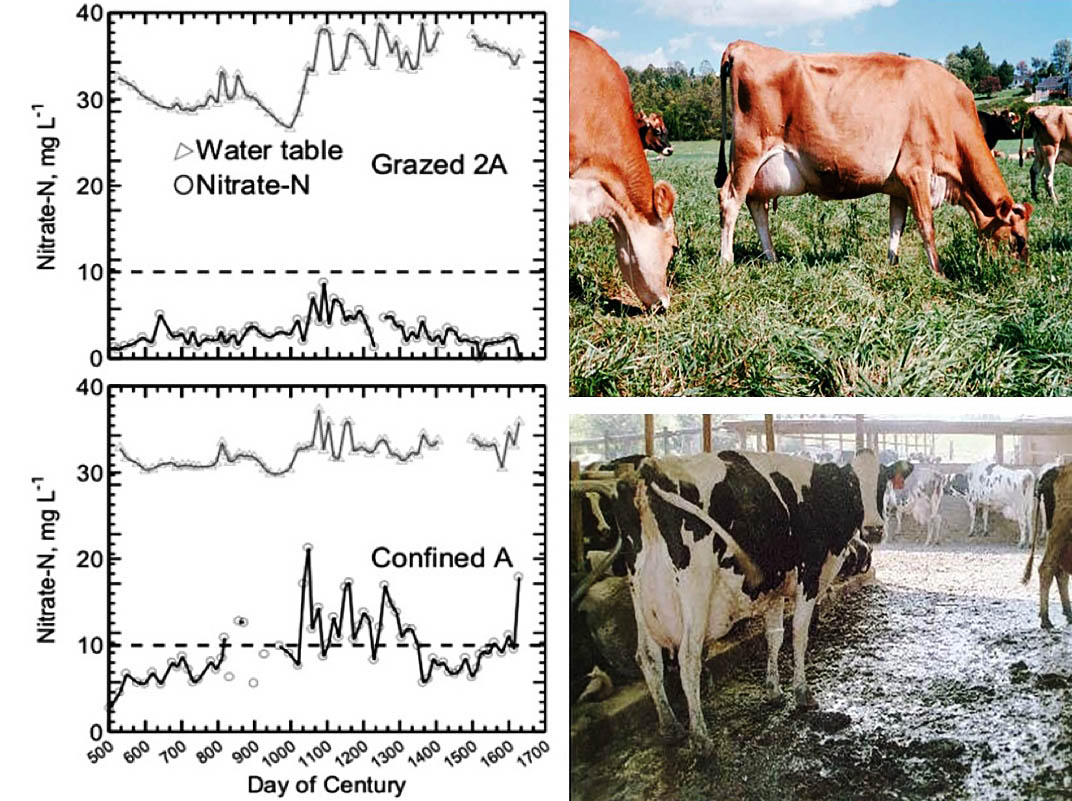 Dairy farming in the United States has become increasingly capital-intensive, using management schemes that confine large herds of highly productive dairy cows on a small part of the farm while practicing high-input crop production on most of the land. Large machines harvest the crops and bring them to the cows while other machines haul the cow manure out to the fields to fertilize the soil. Most US dairy farms are based on such confined feeding practices. To be profitable, these farms generally use economies of scale and high milk production from a large herd to support the extensive infrastructure required. With increased herd size, a significant portion of the feed is usually purchased and imported, leading to potential nutrient loading on the farm. In a reversal of this 20th century trend, during the first two decades of the 21st century an increasing number of US mid-Atlantic region dairy farms are utilizing grazing rather than confined feeding systems, largely because gazing systems require less capital investment and are often more profitable. Concerns over N loss have focused on leaching to groundwater, especially in grazing systems, where dairy cows directly release urine and manure onto pasture.
Dairy farming in the United States has become increasingly capital-intensive, using management schemes that confine large herds of highly productive dairy cows on a small part of the farm while practicing high-input crop production on most of the land. Large machines harvest the crops and bring them to the cows while other machines haul the cow manure out to the fields to fertilize the soil. Most US dairy farms are based on such confined feeding practices. To be profitable, these farms generally use economies of scale and high milk production from a large herd to support the extensive infrastructure required. With increased herd size, a significant portion of the feed is usually purchased and imported, leading to potential nutrient loading on the farm. In a reversal of this 20th century trend, during the first two decades of the 21st century an increasing number of US mid-Atlantic region dairy farms are utilizing grazing rather than confined feeding systems, largely because gazing systems require less capital investment and are often more profitable. Concerns over N loss have focused on leaching to groundwater, especially in grazing systems, where dairy cows directly release urine and manure onto pasture.
